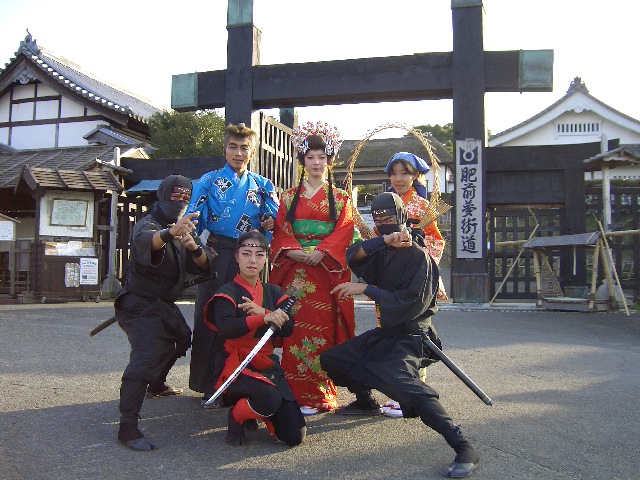Apr 17, 2017
A Museum of Subterfuge – the Ninja Museum of Igaryu in Mie

The existence of the Ninja Museum of Igaryu is testament to mankind’s love of the subversive. Samurai warriors are the esteemed historic Japanese fighters, exuding bravery and honor. But when the job required less honorable methods it was time to call in the shinobi (the term ninja has more recently become popular since World War II). These ninja fighters were expert in sabotage, infiltration and stealth warfare.
Most often the recruits for this dirty work came from the lower classes of Japanese society. One of the main places these ruffians of the 15th and 16th centuries were taught the espionage trade was in the province of Iga, secluded deep in the mountains. The isolation bred secrecy and there is little written historical documentation of the training of ninja warriors. This has led to many myths surrounding the prowess of these fighters since they departed the scene centuries ago.
Honoring a Seldom-Revealed Past
The collision between facts and myths is explored at the unique Ninja Museum of Igaryu, near the site of the traditional Iga training school. The museum was established in 1964 and is run by Jinichi Kawakami who claims to be the 21st head of the Koga Ban family and the only heir to the real ninjutsu tradition; ninjutsu being the Japanese word for the “art of stealth.” He will also be the last as Kawakami has no plans for a successor as a ninja grandmaster, claiming that there is no longer a place in the modern world for the ancient ninja weapons and potions.
The first thing you will notice about the Iga Ninja Museum is that it is small but well equipped to tell the ninja story. The ninja residence, for example, looks much like any rural house in Japan from the outside but once inside there are trap doors, hiding places for weapons stashes, and revolving walls. The fake hallways and traps were necessary for both both defense and to execute hasty escapes.
In the display cases in Ninja Experience Hall are over 400 ninja tools, including actual shuriken stars employed during ninja missions. A video in the Mini Theater demonstrates how ninja operatives could infiltrate nearby Iga Ueno Castle, carry out a mission, and escape undetected. The Ninja Tradition Hall is devoted to the ninjutsu way of life with costumes, secret codes, and ancient ninja writings that speak to the calling of the feudal Japanese spy. The signage is in both Japanese and English and reveals such time-honored ninja techniques as telling the approximate time of day by studying the aperture of a cat’s eye.
A highlight of the visit to the Ninja Museum of Igaryu is a live demonstration show where weapons such as kusarigama (a metal chain with a scythe at the end), razor sharp shuriken and swords are deployed in mock combat. Guides, both male and female (ninja women were known as kuno), interpret the ninja experience. There is an admission fee and for an additional cost of 200 yen you can throw five shuriken. You can also buy rare ninja tools and clothing in the museum shop – just in case Jinichi Kawakami changes his mind and anoints another ninjutsu grandmaster.
Ninja Museum of Igaryu
〒518-0873 Mie Prefecture, Iga, Uenomarunouchi, 117 (map link)
www.iganinja.jp
0595-23-0311
By shinya kawano (嬉野温泉 肥前夢街道) [Public domain], via Wikimedia Commons


About the author